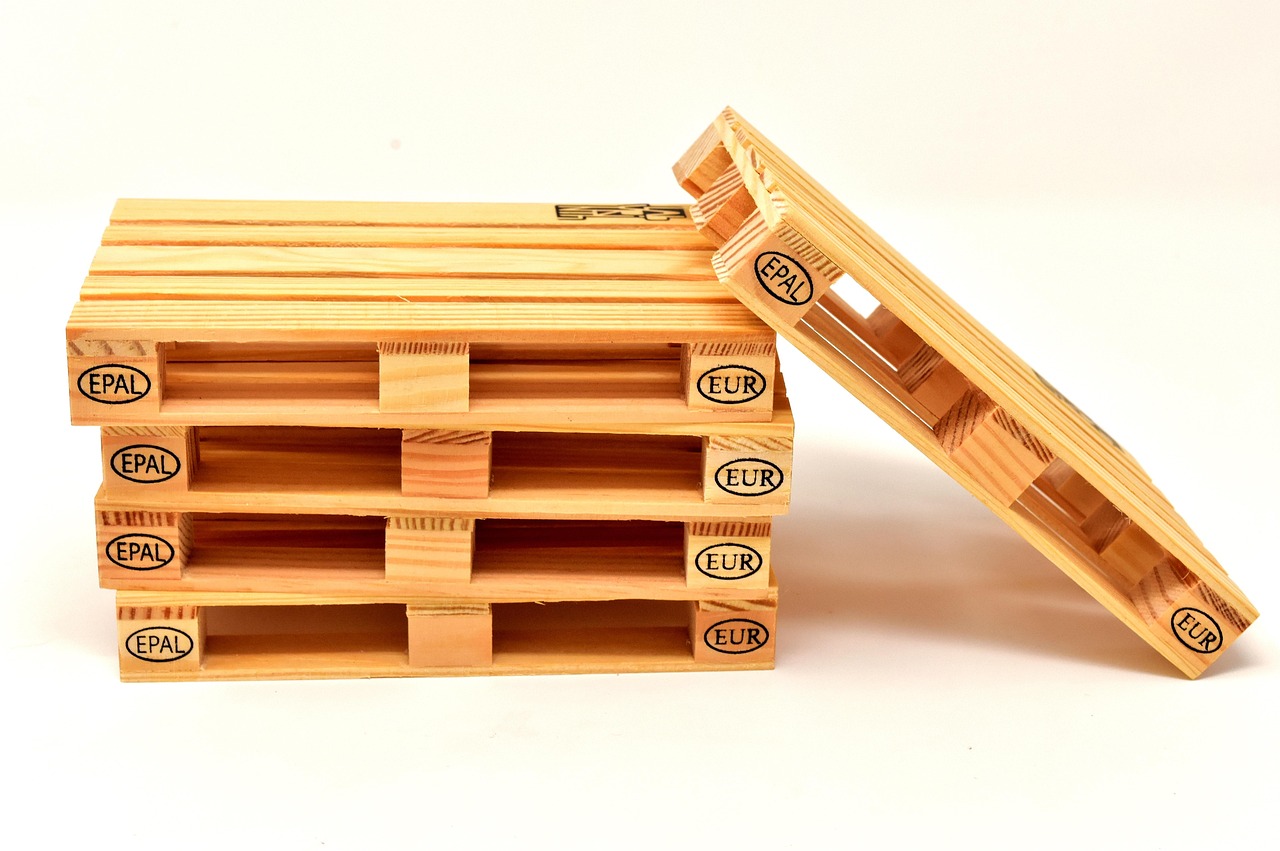Wood pallets are simple structures made from timber that provide a stable platform for storing and transporting goods. They are essential in logistics because they make moving large quantities of items easier and more efficient. Their design allows forklifts and pallet jacks to lift and move loads safely.
Many industries rely on wood pallets due to their durability, availability, and cost-effectiveness. Beyond shipping, they serve various purposes including storage organization and even creative repurposing in DIY projects. Understanding their role helps clarify why they remain so widely used worldwide.
Types of Wood Pallets
Wood pallets come in several designs tailored to different needs. Their differences lie in structure, load capacity, and fork entry points. Understanding specific types helps in selecting the right pallet for storage and transportation.
Stringer Pallets
Stringer pallets use three or more parallel boards called stringers to support the deck boards on top. They have two-way or three-way entry options, meaning forklifts can access the pallet from two or all four sides depending on the cutouts in the stringers.
They are common in North America due to their simple and cost-effective design. However, the load capacity is generally lower than block pallets. Stringer pallets often come in standard sizes like 40×48 inches but can be customized.
Block Pallets
Block pallets use solid wood blocks instead of stringers to support the deck boards. This design allows for four-way forklift entry, making handling more flexible and efficient. The blocks also provide better load distribution.
Due to their robust construction, block pallets typically support heavier loads. They are favored in industries where strength and durability are critical, such as automotive and heavy manufacturing. Block pallets are more expensive but offer longer service life.
Custom and Specialty Pallets
Custom and specialty pallets are designed for unique applications. They may be built to specific sizes, weight requirements, or to comply with export regulations. Some include features like reinforced decks, metal reinforcements, or special wood treatments.
These pallets serve industries like pharmaceuticals, electronics, or fragile goods where standard pallets do not meet the needs. Custom pallets can optimize space and protect products better but involve higher costs and longer lead times.
Wood Pallet Applications and Benefits
Wood pallets serve multiple roles across industries, providing functional support for storage, transport, and environmental practices. Their adaptability and cost-effectiveness are key factors in their widespread use.
Shipping and Logistics Uses
Wood pallets standardize the handling and movement of goods. They fit well with forklifts and pallet jacks, enabling quick loading and unloading. This efficiency lowers labor costs and reduces product damage during transit.
They allow stacking of products, maximizing the use of warehouse and shipping container space. Pallets comply with global shipping regulations, including ISPM 15 treatment standards, which reduce pest contamination risk.
Overall, wood pallets improve supply chain flow by making cargo handling consistent across different transport modes.
Pallet Recycling and Sustainability
Wood pallets are highly recyclable. After their initial use, they can be repaired, repurposed, or ground into mulch or biomass fuel. This reduces landfill waste and promotes circular resource use.
Companies often opt for pallet pooling systems, extending the life cycle of pallets through repeated reuse. This choice supports sustainability goals and lowers material costs.
Wood sourced from managed forests helps maintain environmental balance, while wood pallets’ biodegradability adds to their eco-friendly profile.
Common Industries for Wood Pallets
Wood pallets are prevalent in agriculture, storing fruits and vegetables due to their breathability. In manufacturing, they transport raw materials and finished goods safely.
Retail and wholesale sectors rely on wood pallets for bulk shipping and in-store displays. The construction industry uses them to move heavy building materials efficiently.
Their durability and affordability meet the needs of food processing, pharmaceuticals, and automotive sectors as well, making wood pallets a versatile tool across markets.


Leave a Reply